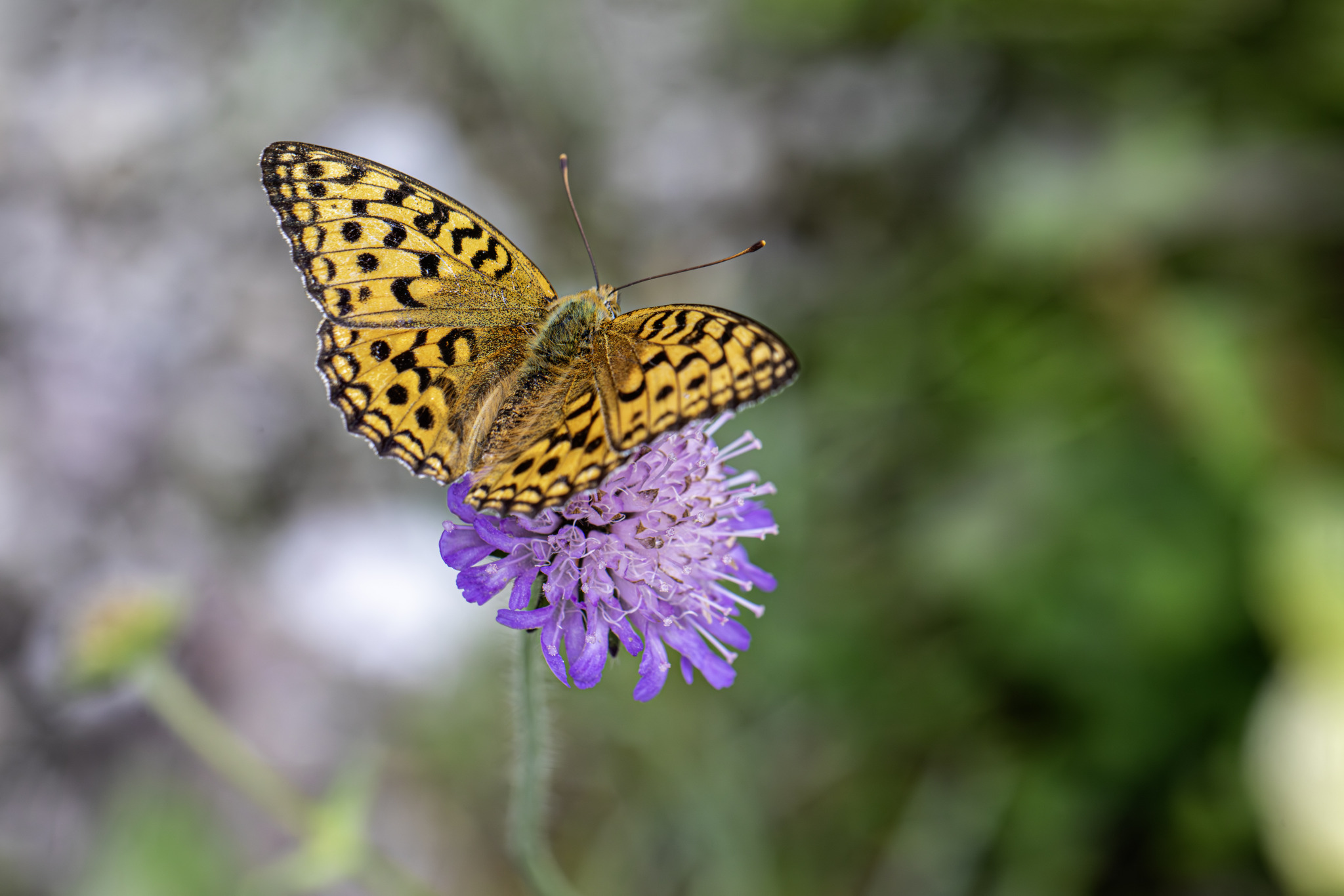The High Brown Fritillary (Fabriciana adippe) is one of the most vibrant and striking butterflies found in Europe. Belonging to the family Nymphalidae, this species is known for its stunning appearance and ecological significance.
Description
- Appearance:
- Upperside: The upper side of the wings is orange-brown with a network of dark spots and lines. The forewings and hindwings have characteristic black markings, including rows of spots and a series of black lines.
- Underside: The underside of the hindwings is mottled with brown, orange, and creamy white, adorned with prominent silver spots and a central row of white pearls, giving it a distinctive look.
- Size: The wingspan ranges from 55 to 65 millimeters, making it a relatively large butterfly.
Habitat
- Distribution: The High Brown Fritillary is primarily found in Europe, though its range extends into parts of Asia. In the UK, it is one of the rarest butterflies, with declining populations.
- Preferred Environment: This species thrives in warm, sunny habitats such as woodland clearings, rough grasslands, and limestone pavements. It prefers areas with a mix of open spaces and shady spots.
Behavior and Ecology
- Flight Period: Adults are typically on the wing from late June to early August, with a single generation per year.
- Diet:
- Larvae: The caterpillars feed on various species of violets (Viola spp.), especially common dog-violet (Viola riviniana) and heath dog-violet (Viola canina).
- Adults: Adult butterflies feed on nectar from a variety of flowers, including thistles, bramble, and knapweed.
- Reproduction:
- Egg Laying: Females lay eggs singly on or near the host plants.
- Larvae and Pupae: The larvae are spiny and feed on violet leaves. They overwinter as small caterpillars and resume feeding in the spring. Pupation occurs in the leaf litter or low vegetation.
Conservation
- Threats: The primary threats to the High Brown Fritillary include habitat loss due to agricultural practices, changes in woodland management, and climate change. In the UK, its decline has been attributed to the reduction in coppiced woodlands and the lack of suitable habitats.
- Conservation Efforts: Conservation efforts focus on habitat management, including the restoration and maintenance of woodland clearings and grasslands. Encouraging traditional woodland management techniques, such as coppicing, can help create suitable habitats for this species.
Observing High Brown Fritillaries
- Best Times: The best time to observe High Brown Fritillaries is during their flight period in mid-summer.
- Watching Tips: Look for them in sunny, open areas within woodlands and grasslands. They can often be seen basking with their wings open or feeding on nectar-rich flowers.
Interesting Facts
- Rapid Decline: The High Brown Fritillary has experienced one of the most rapid declines of any British butterfly, making it a focus of conservation efforts.
- Similar Species: It can be easily confused with other fritillary species, such as the Dark Green Fritillary (Speyeria aglaja). However, the High Brown Fritillary can be distinguished by the pattern and arrangement of silver spots on the underside of its hindwings.
- Larval Behavior: The larvae are nocturnal feeders, making them difficult to observe in the wild.
Summary
The High Brown Fritillary (Fabriciana adippe) is a beautiful and important butterfly that serves as an indicator of healthy woodland and grassland ecosystems. Its striking appearance and specific habitat requirements make it a key species for conservation efforts. Observing the High Brown Fritillary in its natural habitat offers a glimpse into the rich biodiversity of these environments and underscores the importance of preserving traditional land management practices.
Visited 897 times, 22 visit(s) today
Views: 1992
Subscribe to the newsletter:
